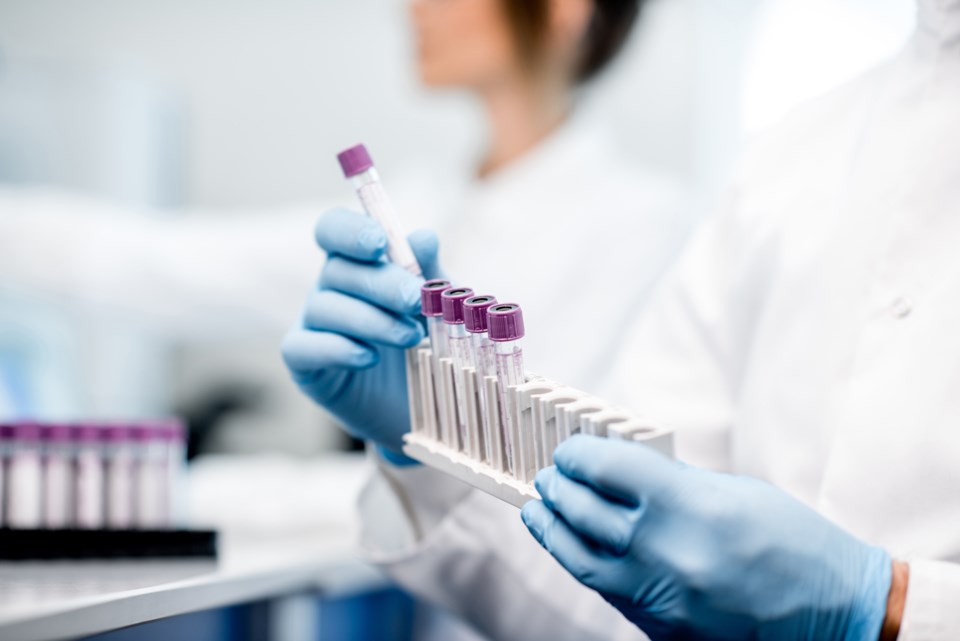Sometimes, all that’s needed is a little nudge in the right direction.
After graduating high school in 2013, Chandler Boucher was unsure what type of career to pursue. Bright, inquisitive and comfortable dealing with people, Boucher says she spent a couple of years bouncing between jobs, “trying to figure it out.”
She wasn’t looking for a typical desk job, and she also wanted to be able to apply her skills towards a rewarding career, something that would allow her to give back to the community.
It was a suggestion from her mother-in-law, Boucher says, that provided that little push, and got her thinking about the healthcare field as a medical lab assistant technologies (MLAT.)
“My mother-in-law works in the same industry, and I always saw the way that she enjoyed her work,” Boucher says. “She’d come home from the lab and tell us about her interesting day, telling us about how much she enjoyed interacting with different types of people.”
So, Boucher says she gave it a shot, enrolling in CTS’s Medical Laboratory Assistant/Technician Program in 2016.
Immediately, she says, it felt like the right place.

What is an MLAT?
Medical Laboratory Assistant/Technicians (MLATs) perform a vital role in the medical laboratory team. They are trained in the collection of specimens from patients, the initial processing and preparation of specimens for analysis, data entry, clerical services, performance of electrocardiograms (ECG’s), and a variety of essential laboratory procedures.
It’s a growing profession in a rapidly-expanding field.
At CTS, MLAT students learn through a 50-week course curriculum, which includes a 6-week placement in the field.
After earning a diploma from the college, learners are prepared for the Medical Laboratory Professionals’ Association of Ontario (MLPAO) Certification Examination.
“The thing that really caught my eye about the course at CTS was they have theory classes for you, and they also have practical, hands-on skills classes,” Boucher says.
“I knew that I was much more of a visual hands-on type learner, and the practical skills classes really allow you to do just that – have all your skills practiced over and over again.”
Those skills allowed Boucher to quickly get hired as an MLAT, where she found herself thrust into the hectic days of the COVID-19 crisis. During those first few months, test results and lab workers were in high demand.
There was so much of a demand for MLATs, that Boucher was asked to return to CTS as an instructor, helping prepare and train the next generation of lab assistants.
Employment opportunities ahead for MLATs
MLATs are proving to be an indispensable asset in a wide-ranging field, says Boucher, who’s now an instructor at the Barrie campus.
“I think a lot of students coming into the program quickly learn that there's a lot more to this field than just a drawing of blood,” Boucher says. “Like, what do we do with the blood after we draw it? Where do we send it? What did those tests do to it? What kind of results are getting passed on to doctors and patients?”
Those could include simple tests like iron and cholesterol levels, up to diseases, viruses and cancer.
“I think the students are very interested to find that when they join this program that they can go the phlebotomy route,” Boucher says, “They can go work at a hospital and LifeLabs, but they can also work at CoreLabs and work in microbiology.”
Encouraging future MLATs
The students she now teaches, Boucher says, arrive in the classroom with varied life experiences, and from all walks of life.
“I have students that are fresh out of high school, 18-19 years old, wanting to just get things going, start their life, start a career,” Boucher says.
“And then I have other people who, maybe have already been in the healthcare field for quite a while as a PSW, for example, or people that have maybe never had the chance to go to college when they were younger. And now that they're older, they've found the time, or the resources to do so.”
She also says that several international students are looking for skills to allow them to enter the Canadian workforce and contribute.
No matter the age, Boucher says, students graduate the program with the hands-on skills needed to do the job well, and work in a fast-growing field.
“It's constantly growing, it's changing,” Boucher says. “Technologists are starting to retire and we don't have enough MLATs to replace them.”
“We really need people to come and join the school and the program and get out there and work and help our patients and the people in our communities.”
Maybe it’s just the natural teacher in her, but one more thing is certain. If you’re looking for that little nudge to get back into school, Boucher she’s more than happy to provide that encouragement.
“School is for everybody, at any time in their life,” Boucher says, “School is never going to be a bad idea. CTS is going to help you take your life further, help further your career, further your knowledge.”
“We have many resources in place to help explain the program and the enrollment process and to really take it step-by-step for people so that it's not so overwhelming at the beginning,” Boucher says.
And the students she meets after graduation are quick to tell Boucher of their success in the field.
“They're on all different paths. And we do everything we can to help those students succeed. We want to see all of our students succeed. And hopefully we can set you on the right path to do what you want to do.“
Interested in learning more about CTS’s Medical Laboratory Assistant/Technician Program? Click on the link to find out how to enrol.
